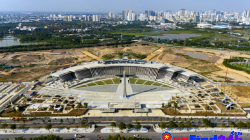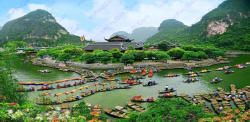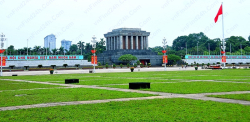Phung Hung Street Art - Have you ever discovered?
Listing Details
Hanoi, Ha Noi
1 year ago
Additional Details
84
6.5k
Description
Nestled in the vibrant city of Hanoi, Vietnam, Phung Hung Street is a haven for street art enthusiasts and cultural explorers alike. Known for its captivating and diverse collection of murals, Phung Hung Street has become an open-air gallery that showcases the rich tapestry of Vietnamese art, history, and community spirit.
This article delves into the mesmerizing world of Phung Hung Street Art, where colors come alive, stories are told, and the essence of Hanoi is beautifully captured on its walls.
1. A Historical Canvas
Phung Hung Street, named after the famous Vietnamese general Phung Hung, is more than just a thoroughfare; it is a living testament to the country's past and present. As one walks down this enchanting street, they are greeted by a melange of art forms that pay homage to Vietnam's history, culture, and social issues. From large-scale murals to intricate graffiti, every stroke of paint represents an artist's interpretation of the world around them.
2. Capturing Cultural Identity
Phung Hung Street Art serves as a platform for artists to express their unique perspectives on Vietnamese identity and heritage. The artworks often depict traditional folk tales, iconic landmarks, and symbols that resonate deeply with the local community. These visual narratives not only celebrate Vietnam's rich cultural heritage but also encourage dialogue and introspection among both locals and visitors.
3. The Power of Street Art
Street art, with its inherent accessibility and public nature, has the ability to transcend boundaries and engage diverse audiences. Phung Hung Street Art transforms the urban landscape into a dynamic and thought-provoking gallery, where anyone can appreciate and interact with the art. It bridges gaps between generations, sparks conversations, and fosters a sense of community pride.
4. Local Artists and Collaborations
Phung Hung Street Art owes its vibrancy to the dedicated community of artists who have contributed their talent and passion to the area. From established muralists to up-and-coming street artists, the diverse range of creators ensures that the street's artistic offerings remain fresh and exciting. Collaborations between artists from different backgrounds and styles infuse the street with a captivating energy, showcasing the ever-evolving nature of the art form.
5. Preserving and Nurturing Street Art
While the ephemeral nature of street art adds to its charm, it also poses challenges in terms of preservation. Recognizing the value of Phung Hung Street Art as a cultural asset, local authorities and organizations have taken steps to protect and maintain these visual treasures. Initiatives such as guided tours, festivals, and workshops not only introduce visitors to the art but also create opportunities for dialogue and education.
6. Tourism and Economic Impact
Phung Hung Street Art has become a must-visit destination for tourists seeking an immersive cultural experience in Hanoi. The popularity of the street has spurred economic growth in the surrounding area, with cafes, galleries, and souvenir shops springing up to cater to the influx of visitors. The symbiotic relationship between art and tourism has created a positive cycle, benefiting both the local economy and the artists themselves.
Conclusion
Phung Hung Street Art is more than a collection of paintings on walls; it is a living testament to the power of artistic expression, community engagement, and cultural preservation. As Hanoi continues to evolve, this vibrant street serves as a reminder of the city's rich history and the enduring spirit of its people. The murals and graffiti on Phung Hung Street not only add a splash of color to the urban landscape but also tell stories, provoke emotions, and invite everyone to pause, reflect, and appreciate the beauty that lies within the intersection of art and life.
Show More














